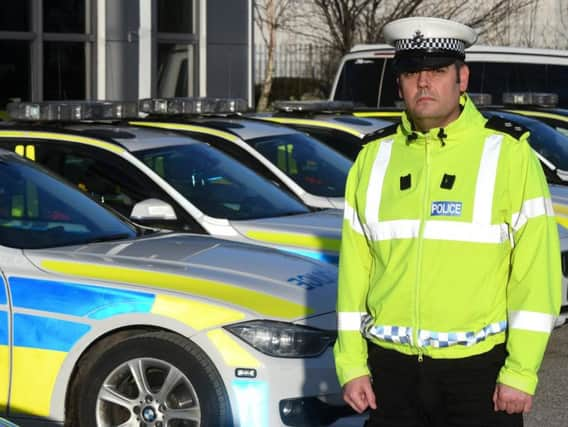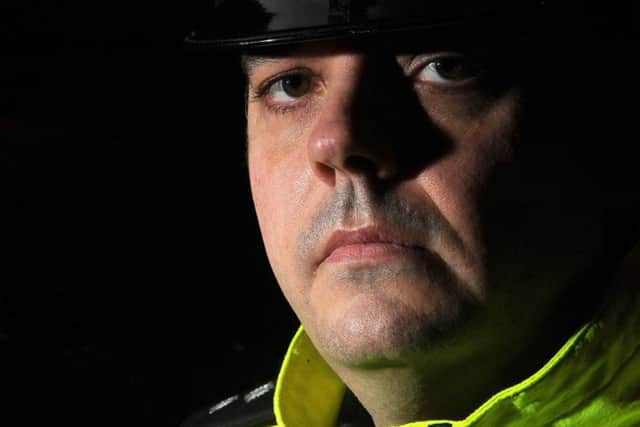How policing has changed since M1 became 'smart motorway' through South Yorkshire


Acting Insp Lee Beck said South Yorkshire Police had changed its procedures and had to re-train staff since the scheme was fully launched on the stretch between junction 32 and 35A.
The officer was speaking after figures showed that 18,323 motorists were caught speeding by the smart motorway cameras since it became fully operational in March last year - compared to just 59 tickets issued by police officers.
Advertisement
Hide AdAdvertisement
Hide AdActing Insp Beck, from the Roads Policing Group, said: "There are pros and cons to smart motorways and it's difficult in terms of enforcing legislation on them because we have not got the hard shoulder any more.


"We can't stop vehicles how we used to so we've had to adapt the way we police the motorway. We've put signs in the of our cars which ask drivers to follow us and then escort them off the motorway."
The smart motorway became fully operational on March 1, 2017 and sees four lanes of traffic flow between junction 32 for the M18 at Thurcroft and junction 35A for Chapeltown.
There are no hard shoulders and traffic is alerted to incidents by gantries above the carriageway, which show red crosses when there is a lane closure and enforce temporary speed limits to help the flow of traffic.
Advertisement
Hide AdAdvertisement
Hide AdActing Insp Beck added: "It's really changed how we police the motorways. Whereas before we could park on the hard shoulder, now if we get an incident we have to be really dynamic and, generally speaking, we have to end up closing the whole motorway.


"It has certainly posed some challenges because we can't just stop drivers. For instance, if you are coming towards junction 33 at Catcliffe northbound, you are straight onto the Parkway and we have to take them to the first lay-by and then they have to go down to the first junction and back up the Parkway to rejoin the M1."
Acting Insp Beck said the changes can be a "drain on resources" at busy times as officers now had to attend breakdowns to ensure the safety of motorists.
"What we have noticed is a significant increase in live lane breakdowns. If someone breaks down and they are stranded the smart motorway signs do warn motorists further back but we all know that not everyone takes note of the signs," he said.
Advertisement
Hide AdAdvertisement
Hide Ad"Highways England has said there hasn't been a significant increase in serious collisions but what we have seen is a significant rise in live lane breakdowns.
"Now if there is a breakdown we sometimes need to respond on blue lights because of the implications that they pose to the public."
Acting Insp Beck also advised motorists to carry out regular checks on their cars to reduce the number of breakdowns and ease the strain on the emergency services.
"A lot of the breakdowns can be prevented. Obviously, there is nothing people can do about mechanical and sudden breakdowns but if people break down because they've ran out of fuel, they are putting themselves at risk, their family at risk and other road users at risk," he said.
Advertisement
Hide AdAdvertisement
Hide AdFigures released under the Freedom of Information Act showed that police officers issued 59 tickets to drivers for speeding on the M1 between junctions 32 and 35A between March 1 and February 7, 2018.
During the same period, 18,322 drivers were caught speeding by the smart motorway cameras - 7,092 of which were sent on a speed awareness course and 5,074 were fined and had their driving licence endorsed with penalty points.
But Jack Cousens, head of roads policy for the AA said over the same period of time there were more than 29.5 million vehicle journeys - meaning only 0.06 per cent of drivers were caught speeding.
He added: "More than 18,000 drivers being caught speeding along this stretch of the M1 may initially sound like a lot but, considering how much traffic it takes, most drivers are obeying the law.
Advertisement
Hide AdAdvertisement
Hide Ad“However, what some drivers seem to be confused by is whether or not a lower speed limit display on the gantry is enforceable. If a lower speed limit is shown then it is there for a reason and must be adhered to. If you don’t you run the risk of receiving a fine and points on your licence.
“Many are frustrated at what may seem to be lower speed limits when the road is clear, but the lower limit is there for a reason.
“This could be congestion further along the motorway, slowing traffic due to a broken down vehicle or an obstruction in the road.”
Mike Wilson, Highways England's chief highway engineer, said: “Smart motorways are good for drivers; they add extra lanes, improve people’s journeys and are as safe as other motorways. A three year study on the M25 has shown that smart motorways are as safe as other motorways.
Advertisement
Hide AdAdvertisement
Hide Ad“We recognise that as well as being safe, drivers want to feel safe and we are making some changes to the design including making emergency areas more visible; introducing systems that detect stationary vehicles; and raising awareness of the need to comply with lane closures.
"For future schemes we will be reducing the maximum space between emergency areas from the maximum of 1.5 miles to one mile, where practical.
“All of this is being done to help road users feel more safe.”